This eBook is also available to download.
There was once a time when employees clocked into work, worked a shift, got their paycheck, and that was that. The employer held all the cards in terms of pay rates, shift scheduling and other benefits that came with the role. However, in recent years, there seems to have been a big shift in the power dynamic between employers and employees.
While no single factor has contributed to this power shift, one major idea to consider is how much smaller the world has gotten. Thanks to globalization, there is far more information available to workers. They have more opportunity to travel and move for jobs that meet their needs.
Job boards, forums, and social media networks give workers the ability to share information about their jobs, and see how other employees are being treated. With this access to more information and better opportunities, it’s become more difficult for employers to maintain high workforce retention.
Workforce Retention for Non-Traditional Employment Types
So often, we see data and statistics around the retention of salaried employees, when hourly/shift workers are typically the workforces that experience the highest rates of turnover. This eBook will focus solely on workforce retention in hourly/shift workers in the industries with poor workforce retention; private security, home & long-term healthcare, hospitality and events/venues.
We’re going to delve into the landscape as it stands, trends in employee retention, factors influencing employee retention, the costs associated with turnover, best practices for retaining non-traditional employees, how technology can be utilised to improve workforce retention, and what the future looks like.
1) Understanding the Landscape
Shift work, part-time, hourly, and gig employment each have unique characteristics that make them susceptible to high turnover rates. Shift work often involves irregular hours, which can disrupt personal life and lead to burnout. Part-time and hourly jobs typically lack benefits and job security, making them less attractive in the long term. Gig employment, while offering flexibility, often provides little in terms of stability and career advancement.
Turnover and Retention Trends in North America

Over the past five years, turnover rates have fluctuated across various sectors. Economic downturns, such as the COVID-19 pandemic, have exacerbated these trends, highlighting the vulnerability of non-traditional workers. However, there has also been significant growth in the gig economy and staffing agencies, driven by a shift towards more flexible work arrangements.
When we look at each of these employment types, we can also look at the industries that they serve. In 2023, the average turnover rate across North America was 41%. We’ll break this down by industry later.
Workforce Composition and Growth
Non-traditional employment sectors have seen considerable growth in recent years. The gig economy, in particular, has expanded rapidly, driven by platforms like Uber, Lyft, and TaskRabbit which have taken North America by storm. Staffing agencies have also grown, providing flexible labor solutions to various industries. Understanding the composition and dynamics of these sectors is crucial for developing effective retention strategies.
At the same time, employment in hourly and shift work industries has struggled to recover since 2020. Consistently, for the past few years, there has been more job openings than hires in the hospitality industry, which tells us that there aren’t enough employees to fill the jobs that are there. The same can be said for healthcare and private security. Are people making to move from these types of jobs to gig work? Are they attracted to the flexibility and independence that comes with it?
2) Trends in Employee Retention

Industry-Specific Retention Rates
Retention rates vary significantly across different industries. Sectors like healthcare and hospitality, which heavily rely on non-traditional workers, have seen higher turnover rates compared to more stable corporate environments. Analyzing these trends by industry helps in understanding the specific challenges and opportunities in retaining non-traditional workers.
Let’s break it down by industry, with a focus on the employment types mentioned above.
- Manufacturing – 37%
- Health services – 39%
- Hospitality & events – 79%
- Private security – >100%!
Comparative Insight: Salaried vs. Hourly Workers
Retention trends among salaried workers differ markedly from those of hourly and gig workers. Salaried workers often enjoy more stability and benefits, leading to lower turnover rates. This isn’t to say that turnover isn’t an issue for employers of salaried workers, it certainly is. However, we’re going to focus on hourly and shift workers.
Hourly and shift workers face more uncertainty and fewer benefits, making retention more challenging. This lack of benefits and lack of structure make it easier for these workers to change positions and walk away from an employer. They don’t have as much to lose. Understanding these differences is key to tailoring retention strategies to non-traditional workers. We’ll discuss the strategies unique to hourly workers that you can try later.
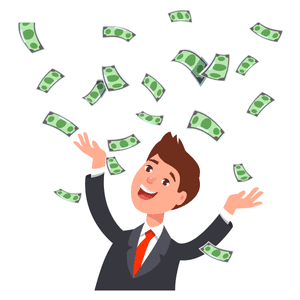
Economic Fluctuations and Market Dynamics
Economic fluctuations and market dynamics, such as the COVID-19 pandemic and rising living costs, have significantly impacted retention rates. While the rise in the cost of living seems to be slowing down, there’s no doubt that prices have been rising steadily over the last couple of years. In 2022, according to the consumer price index, inflation was up 9.1%, the highest peak in over 40 years. And prices increased 3.2 percent between February 2023 and February 2024.
These factors often exacerbate the challenges faced by non-traditional workers, making it essential for employers to develop robust workforce retention strategies that can withstand economic uncertainties. This, as you might imagine is not an easy task – but it is possible!
3) Factors Influencing Workforce Retention
Key Drivers of Employee Turnover
So, when it comes to deskless or hourly workers, what are the key drivers of high employee turnover? There are some very obvious ones;
- Irregular hours with no guarantee of shifts each week
- A lack of flexibility, unlike corporate workers who can work from home, or work compressed work weeks.
- Poor communication is often an issue in these industries, where schedules are often sent out via WhatsApp, and shift swaps or issues are handled in person with no updates for anyone else.
- As we mentioned earlier, hourly workers typically don’t have any benefits, or if they do, they’re very basic.

There are also other factors that we can consider;
Psychological and Logistical Challenges
Non-traditional workers face numerous psychological and logistical challenges. These roles often involve monotonous tasks, irregular working hours, and additional costs such as public transport.
Workplace Culture and Management Practices
Workplace culture and management practices play a critical role in workforce retention. Fostering a supportive and inclusive culture, promoting work-life balance, and adopting effective communication styles can enhance job satisfaction and reduce turnover. Unfortunately, these are rarely seen in deskless, hourly workforces.
Case Study – Genesis Security
Examining companies with high retention rates among part-time and hourly workers provides valuable insights. For instance, companies like Starbucks and Costco have implemented effective retention strategies, including comprehensive benefits, career advancement opportunities, and a positive workplace culture. Let’s take a look at one of the companies that Celayix has worked with where we’ve seen high workforce retention and improved growth.
For over two decades, Genesis Security Group has been a leading pioneer in BC’s security industry serving both public and private clients. As we mentioned previously, the security industry does have the highest rate of employee turnover when it comes to non-traditional employment types.
We at Celayix worked with them to enhance their workforce management, which in turn improved many other factors which directly impacted their employee retention and growth rates. We helped them improve communication, attendance, employee morale, planning and workforce management overall.

With the time they saved managing their employee schedules, they could focus on HR and reducing turnover. In the time just after their implementation of Celayix, not only did Genesis retain their workforce, they scaled it from 500 guards to 1400! You can read the full case study here.
This case study is a prime example of how employers can retain their employees without having to offer better salaries. Looking at other areas of workforce management can drastically improve their workforce retention. Let’s look at then in more detail after we take a moment to analyze the true cost of high employee turnover.
4) The Cost of Employee Turnover
Generally, in business when we’re looking at costs, there are both direct costs as well as indirect costs. Direct costs are expenses that can be directly attributed to the production of a specific product or service, or the provision of a service.
Low workforce retention and high employee turnover incur significant direct and indirect costs. Direct costs include recruiting, hiring, and training new employees, while indirect costs encompass lost productivity, decreased service quality, and diminished company morale. Understanding these costs underscores the importance of investing in retention strategies. Surveys tell us that only 17% of organizations are aware of the direct employee turnover costs. When it comes to indirect costs, that number drops to 9%.
Direct Costs of High Workforce Turnover
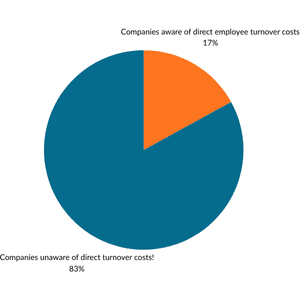
As we mentioned, turnover leads to direct costs which include recruiting, hiring and training new hires, but what does that look like for U.S businesses?
While it looks different in every industry, the direct costs associated with replacing a single worker can range from half to four times the annual salary of the employee. When it comes to hourly workers, this can of course vary but the same idea applies. So, if you’re hiring for a job that pays $30,500 (the average salary of a healthcare worker in the U.S in 2024), you might end up spending up to $120,000.
While this might sound excessive, this is factoring in the time spent by managers filling the role, or agency fees for finding a new employee for the role. You likely also have other employees working extra hours, or overtime hours to cover the shifts of the employee being replaced. Then, once a new hire starts, they likely have to be trained on company policies and procedures which also takes time, and costs money!
Indirect costs of High Workforce Turnover
It’s difficult to put an actual figure on the indirect costs associated with turnover, or low retention. While it’s hard to conceptualize these costs, when we break them down for you, you’ll quickly imagine how expensive they can be.
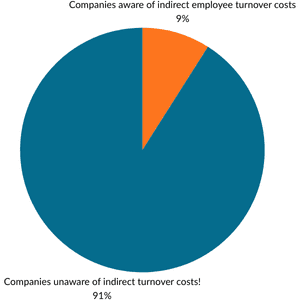
Impact on Production
First, there’s of course lowered production, or quality of service. In the world of manufacturing, a man-down can be extremely costly. In service industries, it can be detrimental to customer service! When it comes to healthcare or security for example, losing an employee can lead to very costly consequences and in the worst-case scenario, someone is hurt, or dies.
Effect on Morale
Following on from that, there is typically a drastic drop in employee morale when voluntary turnover happens. If a team member leaves, it can cause doubt in other employees’ minds, and disrupt the team flow and energy. Team members may need to take on extra responsibilities and that may lead to resentment, which can spread pretty quickly. Not only is this bad for the team, it can actually set off a domino effect of more turnover.
Loss of Company Knowledge
The final indirect cost to consider is the loss of company knowledge that occurs when an employee departs a company. While this is often considered to be greater in corportate roles, that’s simply just not true. Consider how your hourly workers have in-depth customer and process knowledge that goes beyond your standard operating procedures! This is the type of knowledge that only comes with time and experience and can be difficult to document and pass on.
When you consider these costs, we’re hopeful that you can see the potential return on investment when we discuss retention strategies later. Rather than risk falling victim to the extremely high costs of employee turnover, invest in your workforce in order to retain them and experience the higher return on investment that comes with long-standing, loyal workers.
5) Best Practices for Retaining Non-Traditional Employees
So, now that you understand why turnover is so high for non-traditional employees, let’s look at the actual strategies you can deploy in order to retain them!
The First Step – Recruitment
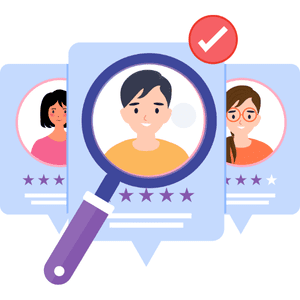
Although it’s often overlooked, effective retention does actually start with recruitment. Hiring the right staff from the outset is one of the best ways to significantly reduce turnover. With this in mind, there are multiple factors to consider when hiring for new roles.
First, you need to clearly communicate job expectations. 41% of workers who have left their jobs within the first three months, did so because the day-to-day role was not what they expected. If there are discrepancies between what is advertised, and what is actually expected, you’re setting yourself up for failure when it comes to worker retention. While you might think giving a vague/inaccurate description of the role will attract more applications, those applications are worthless if the candidate isn’t going to hang around.
Next, you need to assess the cultural fit of the new hire! Assessing cultural fit during the recruitment phase is crucial for ensuring that new hires align with the company’s values, work environment, and team dynamics. So, in order to do that effectively, you need to first define your company culture and values. Don’t be afraid to list them in the job listing and re-emphasize them during the interview process!
You also need to develop a structured interview process that includes behavioral interview questions and situational questions that might give you more insight into the potential new hire. It can also be helpful to have peer interviews. The best people to assess the potential fit of an employee are the team members who will be working with them! While this might seem like overkill for part time, hourly or shift workers, it can be extremely beneficial in the long run! Of course, following the typical checks like personal and professional references is also important and can give you more information on your candidates.
Enhance Job Satisfaction & Engagement
We’ve touched on this idea briefly throughout this eBook, but we truly cannot emphasize the importance of employee satisfaction and engagement enough when it comes to high retention. So many employers think that the only way to do this is to offer high hourly rates, but that’s not the case! The modern worker sees the value in other factors outside of compensation when it comes to their work.
Flexibility

Consider offering flexibility to your employees in a way that benefits you both. According to Flexjobs, 80% of those surveyed said they would be more loyal to their employees if they had flexible work options. Obviously in a lot of the industries we’ve discussed here there isn’t much room for working remotely. However, as an employer you can offer flexibility in other ways!
Flexible employee scheduling can sound daunting to employers, but when managed correctly, it can be extremely beneficial to all involved. Allow your employees to choose the shifts that suit them best. Allow them to input their availability to work so that you can consider it when building out the schedule. If your employees work irregular or unusual hours it’s extremely difficult for them to have any sense of work-life balance. Quickly, it will feel like their lives revolve around their work schedule, and resentment will grow.
Recognise & Reward
Another way to improve satisfaction and engagement amongst your employees is to recognize and reward performance. In corporate roles, employees are rewarded with annual performance bonuses, but these are not the norm in deskless workforces. This recognition can be as simple as praising an employee after a shift for their attention to detail, or their customer service. It can also be beneficial to offer greater rewards which might be additional paid vacation days based on performance or length of service. In fact, rewards based on length of service are a very effective way to promote employee loyalty and reduce turnover.
Finally, one of the most effective ways to enhance job satisfaction and employee engagement is by offering opportunities for career development. What better way to discourage voluntary turnover than by showing your employees how much you value them. When you offer your employees opportunities to advance their career, you’re directly telling them that you value and respect their service and you want to invest your time and money into them, and their development! This is particularly important in sectors like healthcare and hospitality, where continuous skill development is essential. Invest in your people, and they will become invested in your company.

6) Leveraging Technology to Enhance Retention
So, it’s all well and good knowing what you should do in order to retain your workforce… but how to do it is the next step! If we could use one word, it would be “technology”!
Nowadays, there are no excuses for not utilizing technology to improve your workforce retention. Technology is far more accessible, affordable and user-friendly than ever before.
What exactly can technology help with?
When it comes to improving workforce retention, there are certain things you need to work on. Technology can help with almost all of them;
Communication
Communication is at the foundation of almost all employee turnover issues. Feedback isn’t given, schedules are delivered ineffectively, employees don’t feel comfortable speaking to employers… the list goes on. When you consider these industries where employees aren’t sitting at desks all day, and they’re out in the field, these problems are exacerbated greatly! Technology can improve communication tenfold when implemented correctly.
When it comes to communication and technology, employers in non-traditional industries may rely on social media platforms like WhatsApp to run group chats where they distribute schedules, send out updates etc. Yes, they’re embracing technology, but not necessarily the right platform. Generally speaking, WhatsApp is used by employees in their personal lives. To have their work correspondence bundled in with their personal chats can impinge on any sense of work-life balance they may have.
Instead, look at work-specific channels of communication, there are countless out there to choose from! These channels should be safe, secure, and used only for work-related communication. Something as simple as keeping work and personal communication separate can positively influence an employee’s experience at work!
Employee Scheduling, Time and Attendance

We’ve worked with countless businesses in the hospitality industry who build out their employee schedules with pen and paper, or with a basic spreadsheet. As soon as they see our platform and how much time it can save them, they wonder why they didn’t make the change sooner! Not only does it make life better for management, which is great, but it can drastically improve employee experience.
When schedules are managed on paper, employees typically receive them on short notice. Whenever changes are requested, it’s a drawn–out process – the request is made, the schedule gets updated, the schedule then must be redistributed, and sometimes updates can be missed by affected employees.
With employee scheduling software however, employees typically receive schedules much further in advance since schedulers can generate schedules faster. They can view their own specific shifts, right from their phone. They can confirm shifts, receive reminders about upcoming shifts and see everything they need to know about their shift in one place.
The same can be said for time and attendance! Manual sign in sheets are not reliable in any sense, especially when you consider the direct impact they have on payroll. Nearly half of American workers (49%) will seek new employment after just two payroll mistakes, such as being paid late or incorrectly. Technology can be used instead to have integrated time clocks, which ensures employees are paid correctly for the time they actually work. Accurate time collection leads to accurate payroll, which means employees are less likely to leave!
The Role of Mobile Applications in Employee Retention
Mobile apps can facilitate a lot of the functions we just discussed when it comes to technology. There are both employee-centric apps, as well as manager-centric apps! Celayix has an app for employees as well as an app for managers.
Celayix Employee App
The Celayix Employee mobile app can help to create a stable environment where employees can view and take control of their employee schedule from their phone. Flexible scheduling options such as self-scheduling and shift bidding can be managed through the mobile app. Employees can input their work availability, which can be used by schedulers when assigning shifts. Employees can drop shifts or pick up shifts with ease, and the list goes on! This increased accessibility and power is a great workforce retention driver.

Celayix Manager App
The Celayix Manager app is an add-on to the manager platform that Celayix provides, and it helps managers manage schedules on the go. This goes on to improve employee experience as schedule changes and updates can be made instantly even when the managers themselves are out in the field. Responsive managers are more likely to retain their workforce rather than managers who are uncontactable!
7) Looking Ahead
With all of this in mind, what does the future of deskless workers, and workforce retention look like?
Predictions for the Future Workforce
Continued Growth in Non-Traditional Employment Types
The workforce landscape in North America is poised for significant transformation in the coming years, driven by a range of factors including technological advancements, changing demographics, and evolving worker preferences.
Non-traditional employment types, such as gig work, freelance opportunities, and part-time roles, are expected to grow at an accelerated pace.
Expansion of the Gig Economy:
The rise of digital platforms like Uber, Lyft, Upwork, and TaskRabbit has revolutionized the way people find work, enabling a larger portion of the workforce to engage in gig-based employment. These platforms offer flexibility and autonomy, attracting a diverse group of workers. We are likely going to experience more and more workers move to this style of employment, or use them to supplement their other part time jobs.

Beyond ride-sharing and freelance work, the gig economy is expanding into various sectors such as healthcare (telemedicine), education (online tutoring), and professional services (consulting). This diversification provides more opportunities for workers to engage in non-traditional roles.
Governments and regulatory bodies are beginning to adapt to the gig economy, with new laws and protections that could make gig work more sustainable and appealing for workers. As these laws and protections continue to expand, we can expect the labor force in these positions to grow along with them.
Rise of Flexible Work Arrangements:
The COVID-19 pandemic has proven that remote work is feasible and often beneficial. Many companies are now adopting hybrid models, allowing employees to work from home part-time. This trend is likely to continue, with more roles becoming location-independent. However, in a lot of the industries we’ve discussed throughout, flexibility in location is harder for employers to provide… workers need to be on site to perform their roles!
Flexible working hours however will continue to become not only a perk of these roles, but an expectation. Options such as compressed workweeks, flexible start and end times, and job sharing will be offered to non-traditional employees along with self scheduling and shift bidding!
Increasingly, workers are seeking part-time and contract positions to accommodate personal commitments or pursue multiple interests. This further emphasises the importance of work-life balance to all employees. Employers are responding by offering more of these roles to attract a broader talent pool.
Technological Advancements:
Automation and artificial intelligence are transforming various industries, leading to the creation of new job categories and the obsolescence of others. Workers will need to adapt by acquiring new skills and competencies. Thankfully, a lot of the industries we’ve discussed here are safe from AI and automation. Certain jobs will always require a human touch!
Changing Demographics:
Younger generations are known for prioritizing flexibility, purpose, and work-life balance over traditional job security. They are more likely to engage in freelance work, gig roles, and jobs that offer personal fulfillment.
As the population ages, more retirees are re-entering the workforce in part-time or flexible roles. For some, it’s to fulfill passion projects, and for others, it’s out of financial necessitation! Employers will need to accommodate the unique needs of older workers as we see more and more employees come out of retirement.
Emerging Trends in Employment Practices
Increased Focus on Employee Well-Being
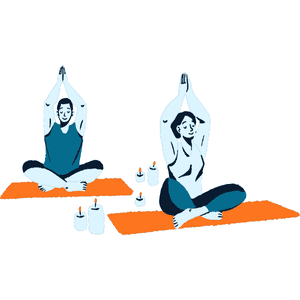
As the workforce evolves, there is a growing recognition of the importance of employee well-being. Companies are increasingly adopting practices and policies that prioritize the holistic health and satisfaction of their employees.
Mental Health Support:
More companies are offering EAPs (Employee Assistance Programmes) that provide confidential counseling services, mental health resources, and support for personal issues. Those that are offering these are already reaping the rewards when it comes to workforce retention.
Programs that promote mindfulness, meditation, and stress management are becoming common in workplaces to help employees maintain mental well-being.
Development of Innovative Compensation and Benefits Packages
To attract and retain talent in a competitive market, companies are developing innovative compensation and benefits packages tailored to the diverse needs of their workforce. They are also looking at improving compensation transparency. At the beginning of this eBook we highlighted the shift in power between the employer and the employee. Now that employees have access to so much more information, it’s in every company’s best interest to be transparent, and offer the very best to their employees.
Flexible Benefits
We expect to see employees of all types receiving benefits in the near-future. While they may not look like “traditional” benefits, they may be other lifestyle benefits that include gym memberships, wellness stipends, and/or food allowances for their shifts.
Performance-Based Incentives
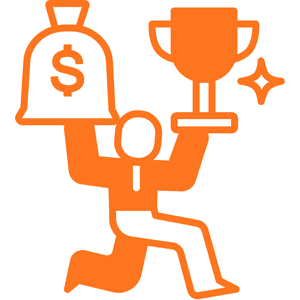
While these were previously reserved for corporate employees, we believe performance-based incentives will become a pivotal factor in workforce retention in non-traditional workforces. They might include bonuses, stock options, or profit sharing! Either way, these incentives will be used to drive up employee engagement as well as retention.
We also see other strategies that we’ve mentioned, including career development opportunities becoming a bigger focus for employers of non-traditional employees.
The future workforce in North America will be characterized by increased flexibility, technological integration, and a heightened focus on employee well-being. Employers who embrace these emerging trends and adapt their practices accordingly will be better positioned to attract, retain, and engage a diverse and dynamic workforce.
So, will you be investing in any of these strategies to improve worker retention at your organization?





